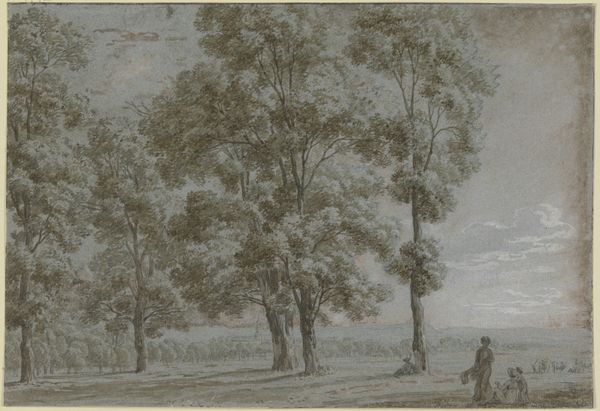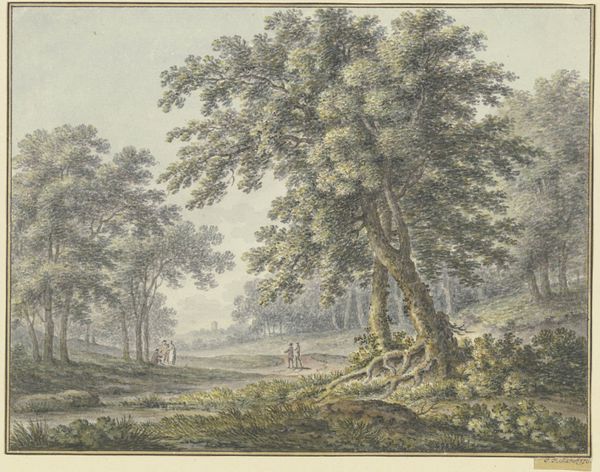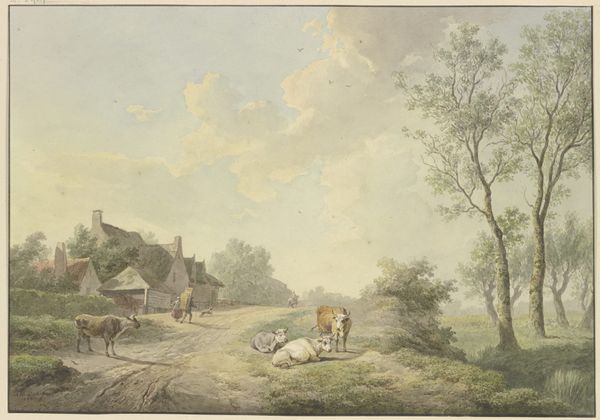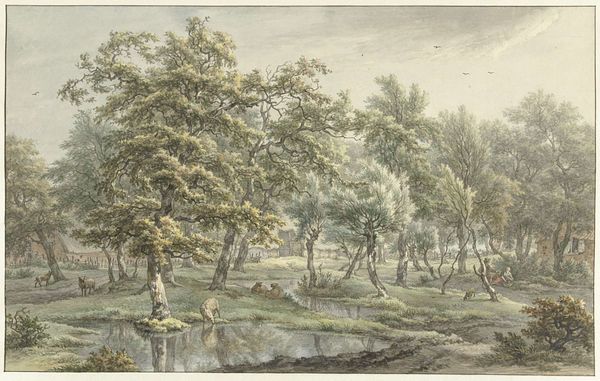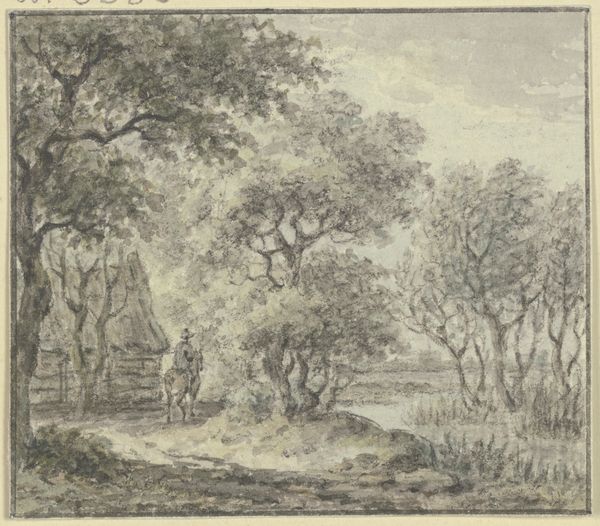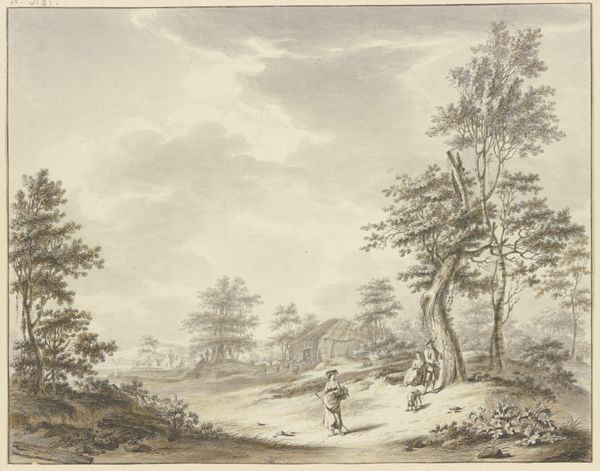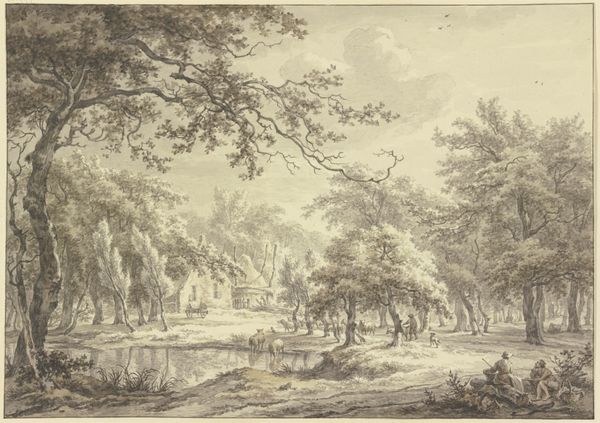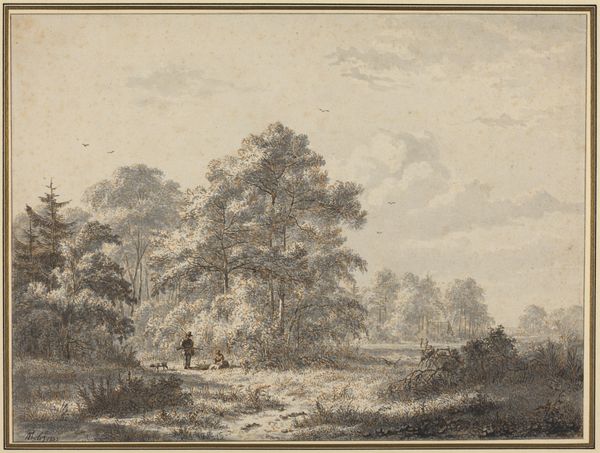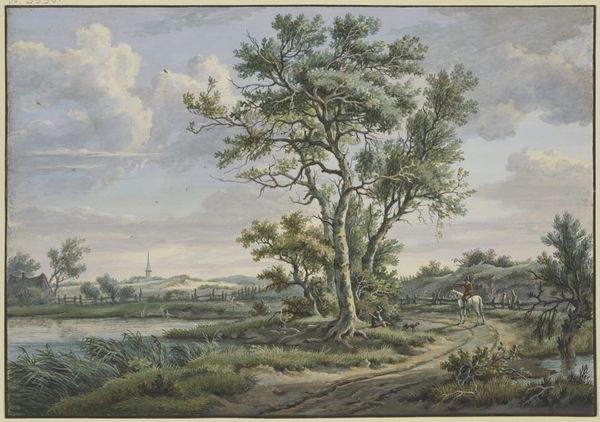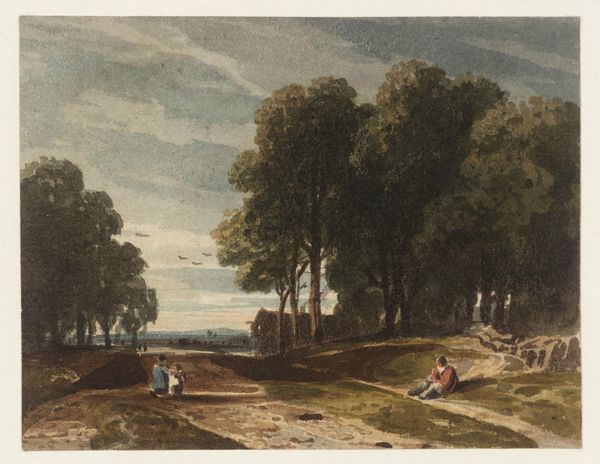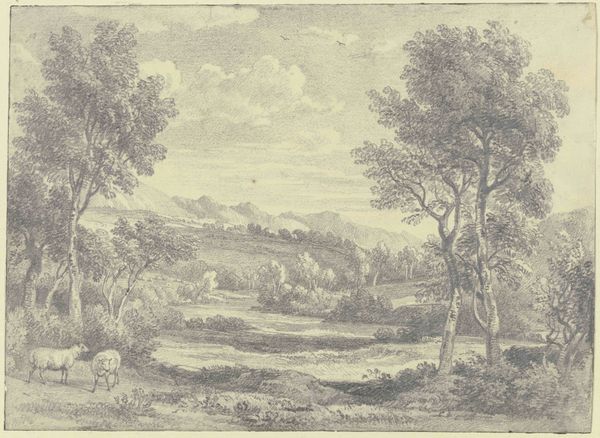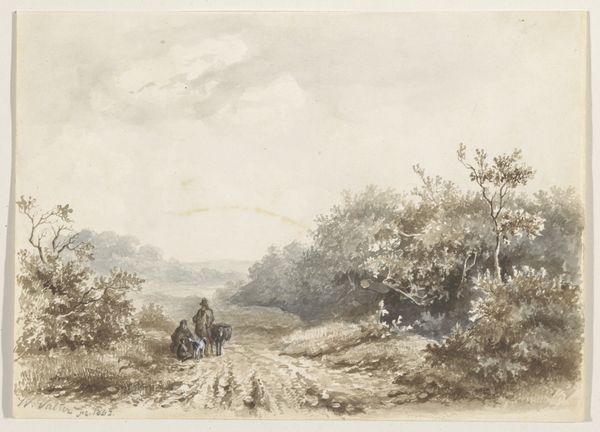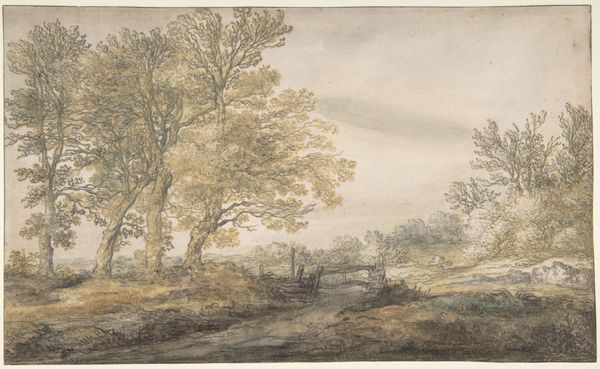
drawing, plein-air, watercolor, chalk, pen
#
drawing
#
plein-air
#
landscape
#
watercolor
#
romanticism
#
chalk
#
pen
Copyright: Public Domain
Curator: Let’s turn our attention to this tranquil landscape, "In t'Duin te Bloemendaal," created in 1801 by Jan Evert Grave. It’s rendered with pen, chalk, and watercolor, quite a delicate combination of media. Editor: The immediate impression is one of airy lightness, wouldn’t you agree? The pale washes create a sense of boundless space; a vast sky and gentle slope of land, sparsely dotted with trees. Curator: Absolutely. Consider the context: this was likely created en plein air, outdoors, which speaks volumes about the artist's relationship to the land itself. We see an emphasis on immediacy and the act of observation, trying to catch a fleeting moment. How do these Romantic-era depictions influence the societal consumption of "nature"? Editor: Interesting question. Before answering it, consider the careful layering of those pale hues; the faint outlines giving form to those cumulus clouds—notice also the two figures discreetly placed. All create depth, even luminosity within this landscape, yet the scene’s structural logic is fairly simple. We see the clear, yet gradual transitions of tones—it pulls the viewer’s eye slowly from left to right, following an intuitive path. Curator: And those two figures aren’t just there to fill the space; they are workers or peasants perhaps; but are surely central to the narrative. Look how the artist employs simple lines and shading to imply their social station, making us aware of the working relationship to the land. Also note the clear brushstrokes indicating the earth is uncultivated. This makes visible the class structure involved with “land ownership”, thereby emphasizing an emerging middle class. This artist is engaging with production on every level. Editor: That may be true. But it's precisely through his manipulation of perspective, balance, and particularly tone that Grave conveys his particular romantic feeling about this setting. The faint, airy medium accentuates nature’s fleeting beauty. It is more about that sense of freedom. Curator: Perhaps we both read a portion of truth into it. Ultimately, art like this speaks of the cultural shifts in landscape perception itself. Editor: Agreed; it highlights how much both objective and subjective interpretation matter in how we regard these works today.
Comments
No comments
Be the first to comment and join the conversation on the ultimate creative platform.
